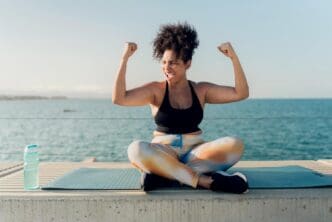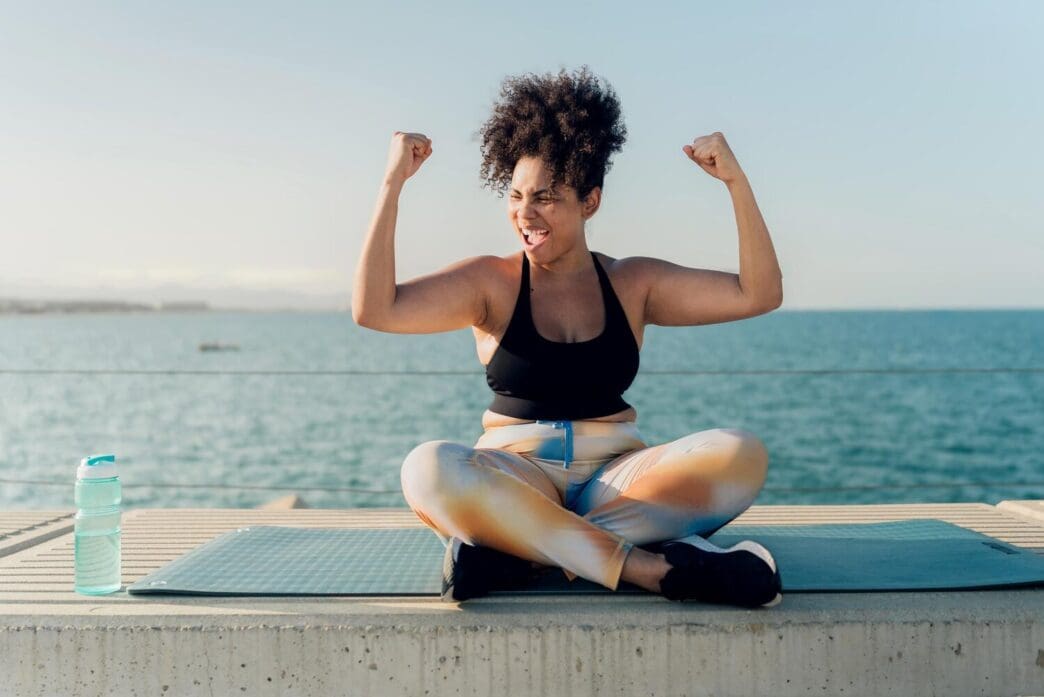A Quick Takeaway
The Story Behind the Trend
How to Make It Work for You
The Community View
Conquering summer running in South Florida, particularly when aiming to “Beat the Miami Heat,” requires strategic planning, physiological awareness, and a resilient mindset for anyone looking to maintain their fitness regimen during the region’s notoriously hot and humid months. From seasoned marathoners to casual joggers, runners must adapt their approach to safely and effectively navigate the intense conditions, prioritizing hydration, smart timing, appropriate gear, and a keen understanding of their body’s signals to prevent heat-related illnesses and continue enjoying their sport. This comprehensive guide provides expert tips to thrive, not just survive, your South Florida summer runs.
Understanding the South Florida Summer Challenge
South Florida summers present a unique and formidable challenge to runners, characterized by a relentless combination of high temperatures, oppressive humidity, and intense solar radiation. These factors collectively elevate the physiological stress on the body, making even short, easy runs feel significantly more demanding than in cooler climates.
The high ambient temperature directly impacts the body’s ability to dissipate heat, requiring more effort to maintain a stable core temperature. Humidity further exacerbates this issue by reducing the efficiency of evaporative cooling, which is the body’s primary mechanism for shedding heat through sweat. When sweat cannot evaporate effectively, it simply drips off, taking minimal heat with it.
Moreover, the strong ultraviolet (UV) index means that sun exposure is a significant concern, increasing the risk of sunburn and long-term skin damage. Understanding these environmental stressors is the first step toward developing an effective strategy for summer running.
Pre-Run Preparation: Setting the Stage for Success
Effective preparation before you even step out the door is paramount for a safe and successful summer run in South Florida. This involves careful attention to hydration, timing, and appropriate attire.
Hydration: Your First Line of Defense
Proper hydration begins long before your run. Start your day by drinking plenty of water and continue to hydrate throughout the hours leading up to your workout. Aim for clear or pale yellow urine as an indicator of adequate hydration.
Consider incorporating electrolytes into your hydration strategy, especially the day before and the morning of your run. Electrolytes like sodium, potassium, and magnesium are crucial for nerve and muscle function, and they are lost in significant quantities through sweat.
Sports drinks or electrolyte tablets can be beneficial for longer runs or if you are a heavy sweater, helping to replenish essential minerals lost in the heat.
Optimal Timing: Beating the Peak Heat
The single most impactful adjustment you can make is to run during the cooler parts of the day. This typically means very early in the morning, ideally before sunrise, or late in the evening after sunset.
Avoid running between 10 AM and 4 PM, when temperatures and UV radiation are at their peak. Even a slight drop in temperature and humidity can make a substantial difference in your comfort and performance.
Gear Up: Dressing for the Heat
Your running attire plays a critical role in managing your body temperature. Opt for light-colored, loose-fitting clothing made from moisture-wicking technical fabrics.
These materials draw sweat away from your skin, promoting evaporative cooling, unlike cotton which absorbs sweat and stays wet, potentially causing chafing and inhibiting cooling. A wide-brimmed hat and UV-protective sunglasses are also essential to protect your face and eyes from the sun’s glare and harmful rays.
Sun Protection: Don’t Forget the Sunscreen
Even on cloudy days, the UV index can be dangerously high in South Florida. Apply a broad-spectrum, water-resistant sunscreen with an SPF of 30 or higher to all exposed skin before every run.
Reapply if your run is extended or if you are sweating profusely. Sunburn not only causes discomfort but also impairs your body’s ability to cool itself.
During the Run: Smart Strategies for Hot Conditions
Once you’re out on the pavement, intelligent in-run strategies become crucial for managing the heat and preventing overexertion.
Adjust Your Pace: Effort Over Speed
Forget about chasing personal bests or maintaining your usual pace during the summer months. Heat and humidity significantly increase the perceived effort of any given pace.
Instead, focus on running by effort or perceived exertion (RPE). Aim for an RPE that feels comfortable and sustainable, even if it means slowing down significantly. Your body is working harder just to cool itself, so don’t add the burden of high-speed running.
Listen to Your Body: The Ultimate Guide
Pay close attention to your body’s signals. Any signs of dizziness, lightheadedness, nausea, excessive fatigue, or confusion are red flags that you need to stop immediately. Pushing through these symptoms can lead to serious heat-related illnesses.
It’s always better to cut a run short than to risk your health. Understand that some days will simply be too hot for your body to handle, and that’s okay.
On-the-Go Hydration: Carry Your Water
For runs longer than 30 minutes, you should carry water with you or plan a route that includes water fountains or stores where you can refill. Hydrate regularly throughout your run, taking small sips every 15-20 minutes rather than gulping large amounts at once.
Consider carrying a handheld water bottle, wearing a hydration vest, or using a running belt with small bottles to ensure continuous fluid intake.
Route Selection: Seek the Shade
When planning your route, prioritize paths that offer natural shade from trees or buildings. Even short stretches in the shade can provide welcome relief and help regulate your core temperature.
Running near large bodies of water, like the ocean or canals, can sometimes offer a slight breeze, though humidity near water can also be higher.
Cooling Tactics: Active Heat Management
Don’t be afraid to actively cool yourself during your run. Pouring water over your head, neck, and wrists can provide immediate, albeit temporary, relief. Some runners even put ice cubes in their hats or sports bras to help lower core temperature.
If you pass a sprinkler or a misting station, take advantage of it. These small acts of cooling can make a big difference in your comfort and safety.
Incorporate Walk Breaks: Strategic Recovery
Even if you typically run continuously, incorporating walk breaks can be a smart strategy in the heat. Alternating running with walking allows your body periodic opportunities to cool down and recover.
This can help you extend your overall workout duration safely and prevent overheating, making your summer runs more manageable and enjoyable.
Post-Run Recovery: Rebuilding and Rehydrating
The recovery phase after a hot run is just as important as the preparation and execution. Proper post-run care aids in muscle repair, rehydration, and overall recovery.
Rehydrate and Replenish
Immediately after your run, focus on rehydrating. Drink plenty of water, and consider an electrolyte-rich beverage to replace lost sodium and potassium. Aim to consume 16-24 ounces of fluid for every pound of body weight lost during your run.
Follow up with a balanced meal or snack containing carbohydrates and protein to replenish glycogen stores and aid muscle recovery. Fruits like watermelon and bananas are excellent choices, offering both hydration and electrolytes.
Cool Down Effectively
A gradual cool-down period helps your heart rate return to normal and prevents blood pooling. After your run, walk for 5-10 minutes, then engage in some light stretching to improve flexibility and reduce muscle soreness.
Consider a cool shower or bath to further lower your body temperature. Some athletes even opt for an ice bath, which can be particularly effective in reducing inflammation and promoting recovery after intense heat exposure.
Acclimatization: Adapting to the Heat
Your body has an incredible ability to adapt to environmental stressors, including heat. Heat acclimatization is the physiological process by which your body becomes more efficient at cooling itself in hot conditions.
This process typically takes 10-14 days of consistent, gradual exposure to the heat. During this period, your body will increase plasma volume, lower your core temperature and heart rate at a given intensity, and produce more dilute sweat, making cooling more effective.
Start with shorter, lower-intensity runs and gradually increase duration and intensity over two weeks. Be patient and consistent, and you’ll notice a significant improvement in your comfort and performance in the heat.
Recognizing and Preventing Heat Illness
Understanding the signs and symptoms of heat-related illnesses is critical for your safety. Prevention is always the best approach, but knowing when to act can be life-saving.
Heat Cramps
These are painful muscle spasms that can occur during or after exercise in the heat. They are often a sign of dehydration and electrolyte imbalance. If you experience heat cramps, stop running, stretch the affected muscle, and rehydrate with an electrolyte-rich fluid.
Heat Exhaustion
More serious than cramps, heat exhaustion symptoms include heavy sweating, cold, clammy skin, nausea, dizziness, headache, weakness, rapid pulse, and fatigue. If these symptoms occur, move to a cool place, lie down with your feet elevated, and drink cool fluids. Seek medical attention if symptoms do not improve within 30 minutes.
Heatstroke
This is a medical emergency and can be fatal. Symptoms include a high body temperature (above 104°F or 40°C), hot, red, dry or moist skin, confusion, altered mental state, slurred speech, seizures, and loss of consciousness. If you suspect heatstroke, call 911 immediately. While waiting for help, try to cool the person down with ice packs or a cool bath.
Training Adjustments: Rethinking Your Routine
Summer in South Florida is an excellent time to shift your training focus and incorporate new strategies that complement the challenging conditions.
Focus on Effort, Not Pace
As mentioned, prioritize effort. This allows your body to work within its safe limits. Consider heart rate training as an alternative metric, aiming for specific zones based on your maximum heart rate rather than a set pace.
Embrace Cross-Training
Utilize indoor training options to maintain fitness without the heat stress. Swimming is an excellent full-body workout that also provides cooling. Treadmill running, cycling classes, and strength training in air-conditioned gyms are also great alternatives.
Cross-training can help maintain your cardiovascular fitness and muscular strength, ensuring you’re ready to hit the pavement hard once cooler weather returns.
Shorten Runs or Break Them Up
Instead of one long run, consider breaking it into two shorter segments – one early morning and one late evening. This allows for a mid-day recovery and cooling period, making the total mileage more manageable.
Mindset and Motivation: Staying Positive
Running in the South Florida summer is as much a mental game as it is a physical one. A positive and adaptable mindset is key to staying motivated.
Embrace the challenge as an opportunity to build mental toughness and resilience. Understand that your pace will naturally be slower, and that’s okay. Focus on consistency and the health benefits, rather than speed.
Find running partners who share your commitment and understand the unique challenges. Group runs can provide motivation, accountability, and a shared experience that makes the heat more bearable. Celebrate small victories, like completing a run on a particularly hot day, and remind yourself of the unique beauty of running in South Florida, even in the summer.
Conquering summer running in South Florida is a testament to a runner’s dedication and adaptability. By meticulously preparing, strategically executing, and prioritizing recovery, runners can safely and effectively navigate the intense heat and humidity. Listening to your body, understanding the signs of heat illness, and making smart adjustments to your training regimen are not just recommendations, but essential practices for a sustainable and healthy running lifestyle in the Sunshine State.







